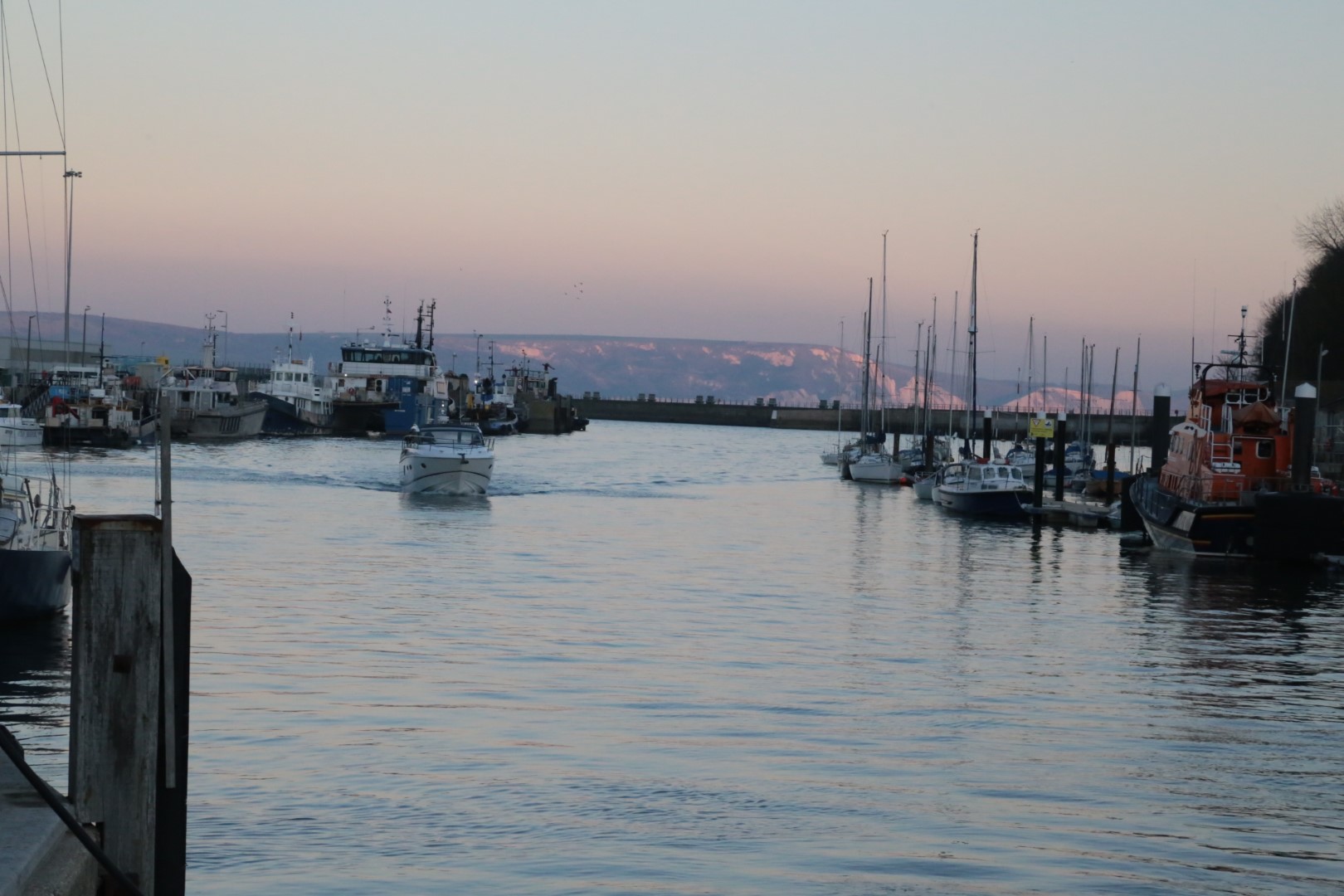RYA, Chief Instructor Motor Cruising and Power Schemes, Rachel Andrews, shares some sound advice about night cruising and the things you should consider before heading out.
Powerboating at night can be exhilarating and scary at the same time. Seeing a familiar stretch of water lit by moonlight with a blanket of stars twinkling away can be a beguiling sight.
One of the best things about night cruising is that it tends to be not so busy at night, so it can feel like you have the ocean all to yourself. Cruising at night is not for the faint hearted, but it is great for those with an adventurous spirit.
To get the most out of any opportunity to go powerboating at night, it is important to be prepared; as they say “failing to prepare is preparing to fail”!
Start by asking yourself some questions to help formulate a plan:
- What type of boat are we planning to use?
- Who is the skipper and who are the crew?
- What is their level of experience at running in these conditions?
- How long do we intend being out for? Will we need extra food or drink?
- Are there any tidal restrictions we have to take into account?
- Where are we going? What is the area like, are there numerous hazards to be aware of such as commercial shipping, underwater obstructions, etc?
- Who knows where we are or when we’ll be back?
The plan should include making sure the boat is appropriately kitted for the area you will be in, the likely duration you will be afloat (remember that fuel is not always available 24/7) and that the boat will have the required navigation lights in proper working order. Checking that everything works early on allows time to get hold of any replacement parts or to fix a loose wire connection.
How experienced is your crew?
Think about what you are asking of your team. Are they experienced enough to safely do the jobs you may be asking of them, for example helming in the dark, or understanding your plan well enough to be able to navigate for the helm.
Driving a powerboat in the dark for the first time can be very intimidating, doing so with little experience of driving a compass course or following the electronic navigation aids can take even a confident day time helm a bit of time to get used to.
Expect the first night run with an inexperienced crew to be slow and a bit start-stop as they adjust to interpreting nav marks in the dark and taking instructions on route changes. That said, everyone has to start somewhere, just try not to be too ambitious with the first few trips in the dark, and don’t expect it to be as quick as in daylight.
It should go without saying that everyone should be dressed and kitted appropriately. Meaning that they should be comfortable protected from the elements by good waterproof kit, and a life jacket with a light is absolutely essential.
As with all powerboating, if the boat is fitted with a kill cord, this should be attached around the leg of the helm and worn at all times when the engine is running. Make sure that when running, everyone is securely seated with good handholds. On a RIB, people often sit on the sponsons, not ideal at any time, but at night it is vital that you know everyone is safe and secure.
It’s worthwhile planning in a stop during the night cruise, be it to nip to the loo, get a hot drink, or just to have a few minutes off concentrating so hard. Looking after the crew is about making sure they are happy with what is going on, but equally about not wearing them out with huge long legs in rough conditions leaving them desperate to get off! A flask and some chocolate bars can really perk up a flagging crew.
Plan with care
Planning the night cruise should be done with care. In the first instance, plan to go out in an area you know. A word of warning though, be careful not to be complacent as you may be really familiar with the area by day, because once darkness falls it is completely different ball game.
Even if you are sure you know the place like the back of your hand, take a chart and make notes about your intended route. Although the most logical way may seem to be to write a table of distances, bearings and light characteristics, it can be hard to follow, and easy to skip a line which may have dire consequences. Drawing a visual representation of the route (including any course alterations and hazards) can be helpful, especially for an inexperienced navigator to interpret.
Talk the crew through the plan. Show them the chart and any electronic nav aids you are intending to use. Explain the route and any key points of note. As distances can be more difficult to judge at night, let the crew know that you want them to get involved in keeping a look out and identifying marks and features of the plan. When the crew feel they have a part to play in the safe navigation of the boat, they feel part of the team and are more likely to learn about night time running that if they were just along for the ride.
It pays to be fully prepares and to play it careful on your first few night cruises. The
RYA Advanced Powerboat course introduces experienced skippers to the skills required to safely helm and navigate a boat at night and in more challenging situations.
For more information about RYA Powerboating and Motor Cruising courses or for further reading pick up a copy of the RYA Powerboat Handbook or the new RYA Advanced Powerboat Handbook, both by Paul Glatzel, at
www.rya.org/shop

